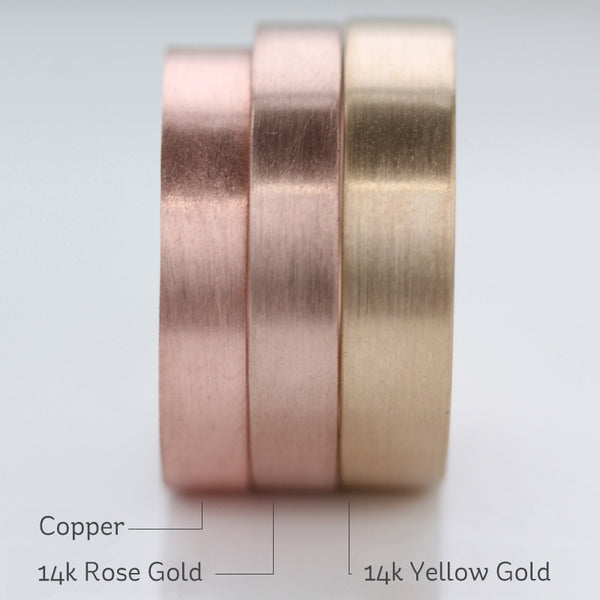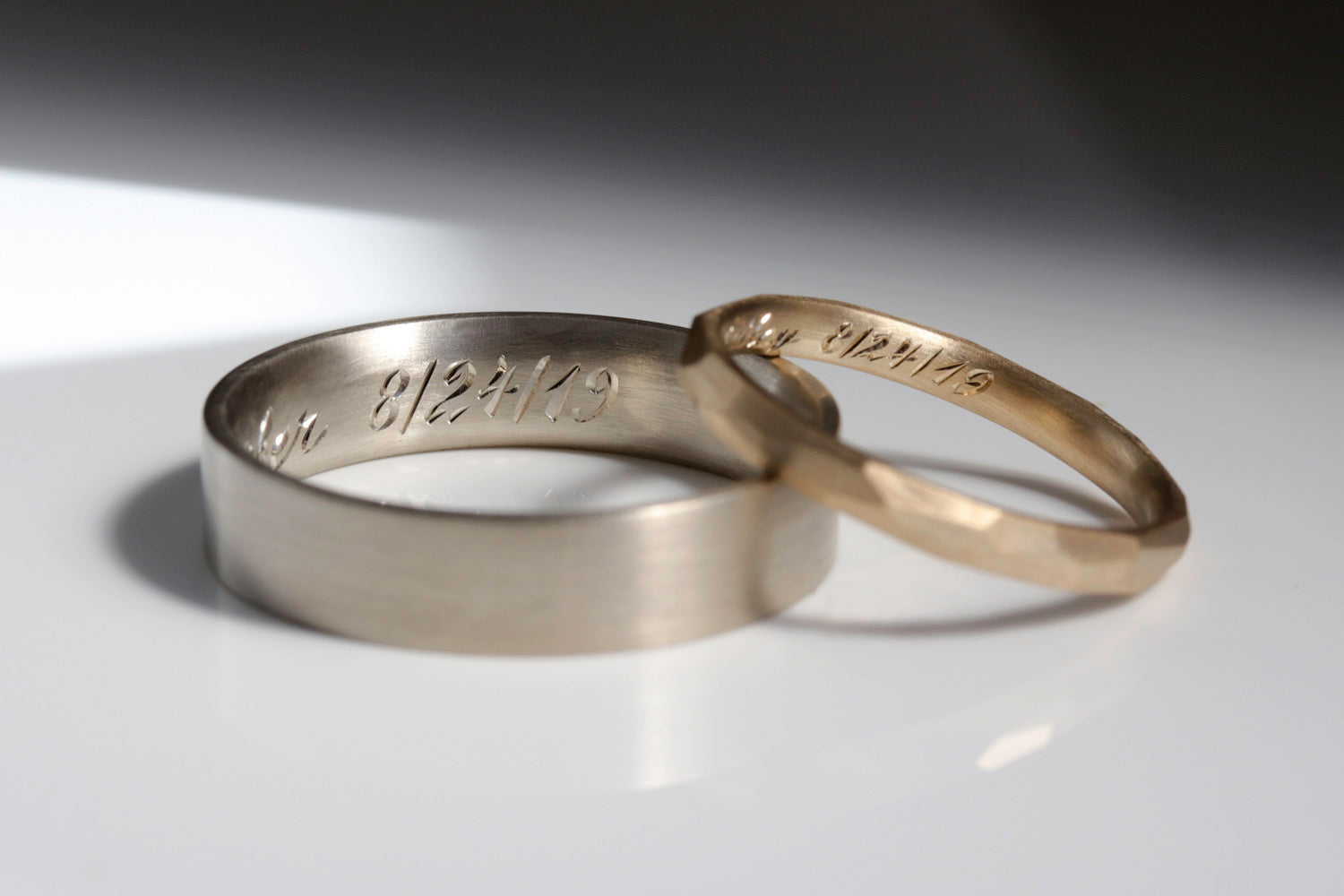Metal Alloys
Pure gold is 24k – it is very yellow in color; it doesn't tarnish or change color; it's hypoallergenic; it's luminescent, soft, malleable, and expensive. So we combine it with other metals to increase durability, reduce price, and change the color. When we combine one metal with other metals, that combination is called an alloy.

The karat of gold refers to the amount of pure gold (24k) in that alloy; however, it does not indicate what the other metals are in the ally – only the amount of pure gold. 24k gold (pure gold) is not typically used in jewelry because it is too soft. More commonly, you will see 18k (75.2% pure gold), 14k (58.5% pure gold), and 10k (41.8% pure gold) alloys used for jewelry in the US.

Pure gold is always a vibrant yellow color. So when talking about a white, rose, or green gold, you are always talking about a gold alloy. It is the other metals that are mixed with pure gold that give it its color. 14k rose, yellow and green gold are all made up of 58.5% pure gold, then the remainder of the alloy is silver, copper, and zinc. It is by varying the proportions of the silver and copper that you get the three different colors. Green gold contains more silver than yellow gold, and rose gold contains more copper than yellow gold.

Rose gold is a gold alloy that is similar in color to copper. This is due to its higher copper content. It is also referred to as red gold and pink gold. It is much pinker in color than 14k yellow gold but a bit less pink than copper. Pure copper is not a good choice for a wedding band because it tarnishes very quickly, is exceptionally soft, and will turn most people's skin green, which is not harmful, just unsightly. 14k rose gold is an excellent option for someone wanting a copper-colored wedding band without that pesky green skin look.

The white metals we typically work with are 10k, 14k, 18k white gold, and platinum. 14k white gold still contains 58.5% pure gold but is alloyed with other metals to make them more white in color. One of the metals in a traditional white gold alloy is nickel which is the most common metal allergen. If you are allergic to white gold, you will want to stay away from conventional white gold or grade 1 white gold (which contains more nickel than standard white gold). Platinum, palladium, and palladium white gold are all white metal options that do not contain nickel.

Platinum is a bright white metal that is slightly darker than silver but is much more durable than silver. When the word platinum (also PT or plat) is used in jewelry without any other qualifiers, it must contain at least 95% pure platinum. If the alloy has less than 95% pure platinum, a number is required in front of it to indicate the percentage of pure platinum. Platinum does not wear away over time the way that other precious metals do. That means 30 years down the road; a platinum ring will weigh about the same as it started, however platinum and palladium scratches and dings much easier, so it will show much more wear and tear in the first year. Palladium is in the same group of metals as platinum and shares many of the same properties.

To find out more about the differences between white gold and palladium, check out this blog post: The Differences Between White Gold and Palladium

